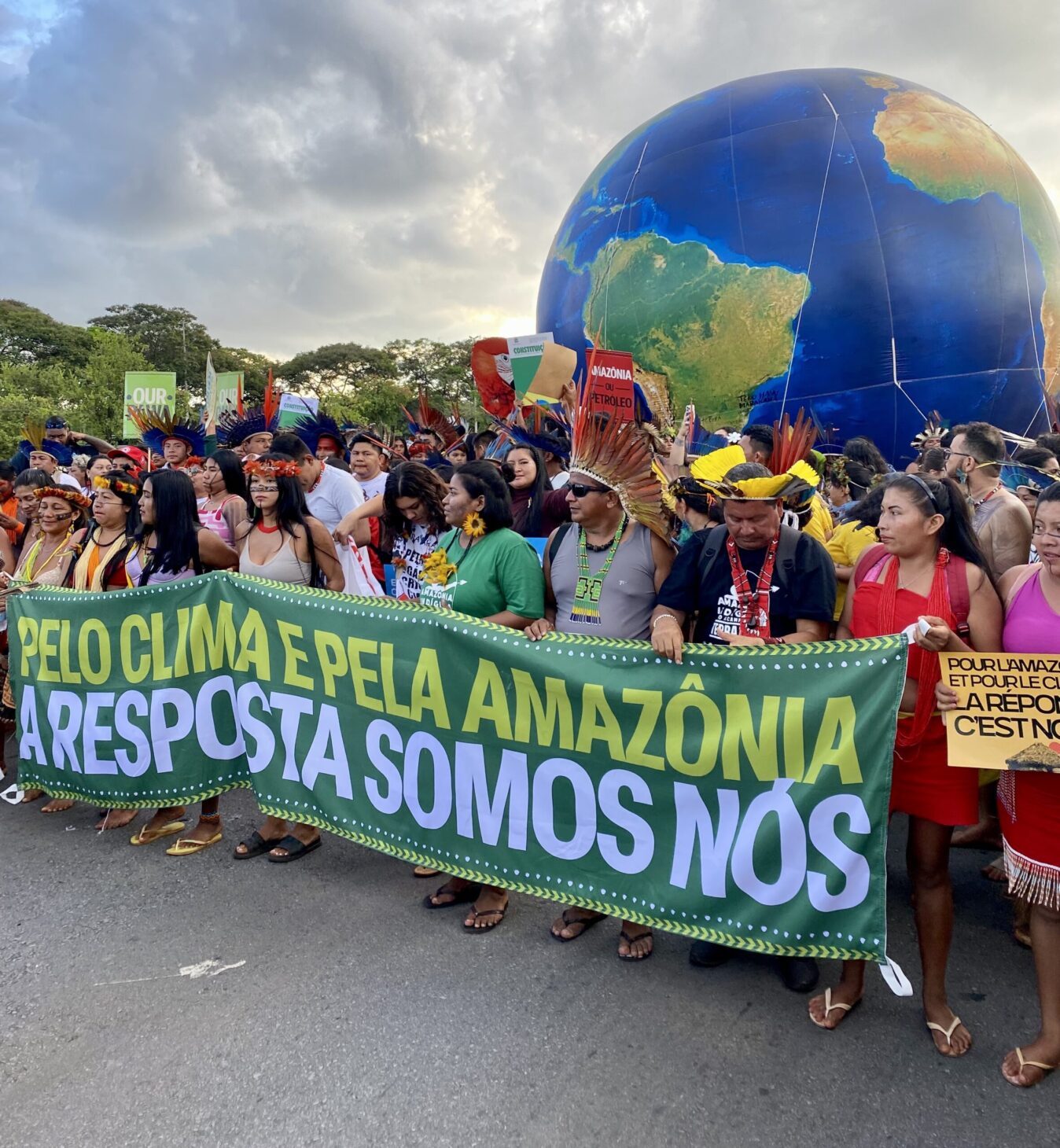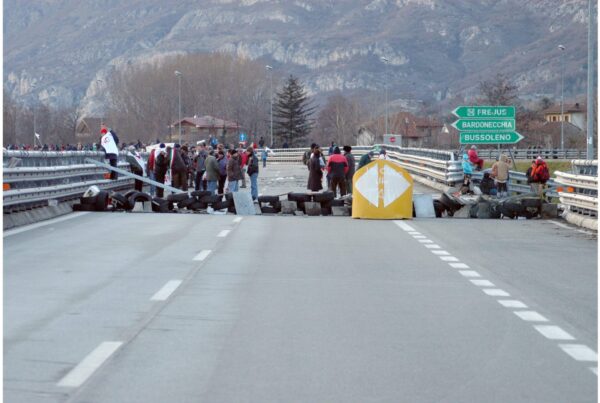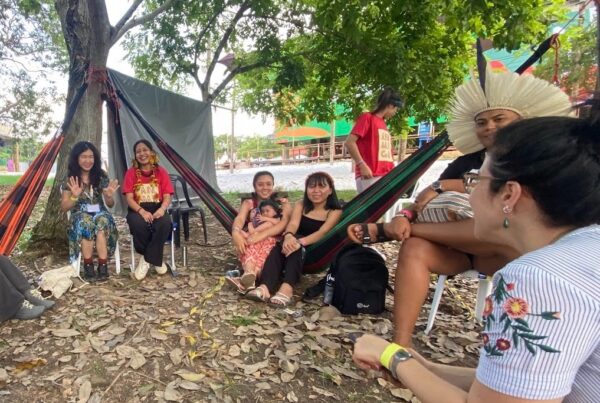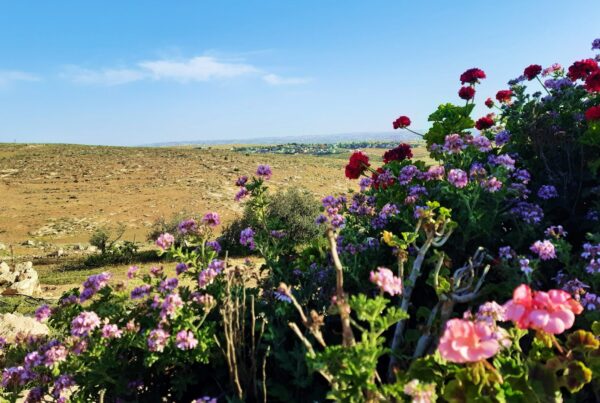by Daniela Duarte Lima
At the largest gathering of indigenous peoples in Brazil, their organizations call on society to join them in defending the planet. They highlight the importance of their knowledge in tackling the climate crisis and demand that the protection of their territories becomes a key climate policy.
Introduction
“We, the Indigenous Peoples of Brazil, in the face of the gravity of the climate crisis, know that the time to act is now. We know who is setting the planet on fire and we feel the devastating impacts in our territories and our lives. With the imminent collapse of living conditions in the world, strong and effective actions must be taken. There will be no life on a burning planet. The climate crisis is also a crisis of leadership and values. We have never given up on defending life, and we will not get lost in empty discussions and sterile commitments. The answer is us” (Articulação dos Povos Indígenas do Brasil)
Brasília, the capital of Brazil, April 10, 2025. Around 8,000 Indigenous peoples march toward Praça dos Três Poderes, the symbolic heart of Brazil’s government, where the executive, legislative, and judicial branches converge. Under the banner “The answer is us” (“A resposta somos nós”), they demand that the protection of their lands be formally recognized as climate policy. Their voices call for an end to fossil fuels and a just energy transition. They are organized in delegations according to their ethnic groups — over 305 in Brazil, speaking more than 270 languages. Some carry banners and placards, others shake their maracás, summoning the spirits to accompany them in this struggle. I hear chants in Portuguese, but also in Kayapó and other native languages I cannot recognize.
The march took place during the Free Land Camp (Acampamento Terra Livre – ATL), the largest gathering of Indigenous peoples in Brazil. Now in its twenty-first edition, the event is organized by the Articulation of Indigenous Peoples of Brazil (Articulação dos Povos Indígenas do Brasil – APIB). This year, as Brazil prepares to host COP30 in the Amazon region, the climate emergency has taken center stage. Indigenous movements argue that addressing the climate crisis requires the recognition of their ancestral knowledge as fundamental to confronting this crisis, and the full inclusion of Indigenous peoples in decision-making processes.
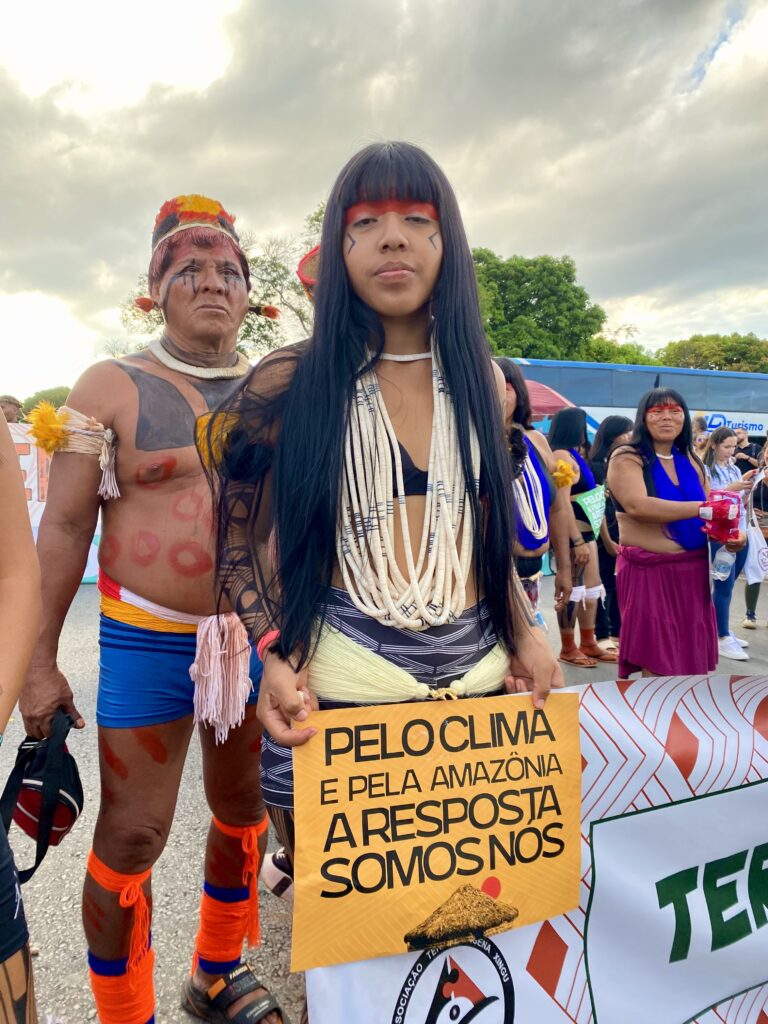
A young Indigenous woman holds a sign that reads: “For the climate and for the Amazon, the answer is us” (credit: Daniela Lima).
The debate at the ATL was also strongly marked by criticism of Law 14.701, known as the Time Frame (Marco Temporal). Passed by the Brazilian Congress in 2023, the law represents a major setback for Indigenous rights, and could effectively halt new land recognition and protection across the country. This new law requires that Indigenous peoples must have been living on their lands in October 1988, the date of the Constitution’s promulgation, to claim their rights — willfully disregarding the centuries of forced and violent displacement suffered by these communities. Since its approval, Indigenous communities have reported a rise in insecurity, conflict and violence.
This year, for the first time, I attended the camp for the full five days, immersing myself in the debates, plenary sessions, and protest marches. I also spoke to Indigenous leaders and activists to gain insight into how they are advancing this critical climate debate in Brazil.
The answer is us
The ATL is organized into large tents representing the seven regional movements that make up APIB, surrounded by camping tents where participants stay, with a spacious plenary session at the center. The Coordination of Indigenous Organizations of the Brazilian Amazon (Coordenação das Organizações Indígenas da Amazônia Brasileira – COIAB), one of APIB’s regional movements, draws significant attention from the non-Indigenous public. The Amazon has become a focal point in the global climate debate, largely due to satellite research revealing the forest’s role as a massive carbon sink, crucial for global climate stability. These studies have also shown that protected and demarcated Indigenous lands are the most well-preserved areas, serving as effective barriers to deforestation.
Fully aware of these, COIAB has sought to take a leading role in the climate debate, advocating for the recognition of Indigenous knowledge, self-determination, cultures, and the ways in which they protect forests. Inside the COIAB tent, several banners read, “For the climate and the Amazon, we are the answer.” I spoke with Toya Manchineri, COIAB’s general coordinator, who explained how this campaign emerged and how Indigenous peoples are often burdened with the responsibility of saving the Amazon, and the planet. For Toya, the “we” must extend beyond Indigenous peoples to include governments, activists, and scientists, as it will take all of us, working together, to halt the accelerating climate collapse. In his words:
“Too often, the responsibility of protecting the forests and saving the Amazon is placed solely on the shoulders of Indigenous peoples. Meanwhile, the Brazilian state and the states within the Amazon basin continue to weaken environmental legislation. When we say ‘the answer is with us,’ we don’t mean Indigenous peoples alone. We are already doing our part. But this campaign seeks to reach other, non-Indigenous societies as well. Because what we do as Indigenous peoples, with our knowledge, is not enough on its own to stop deforestation and global warming. It is essential that everyone becomes involved as part of the solution.”
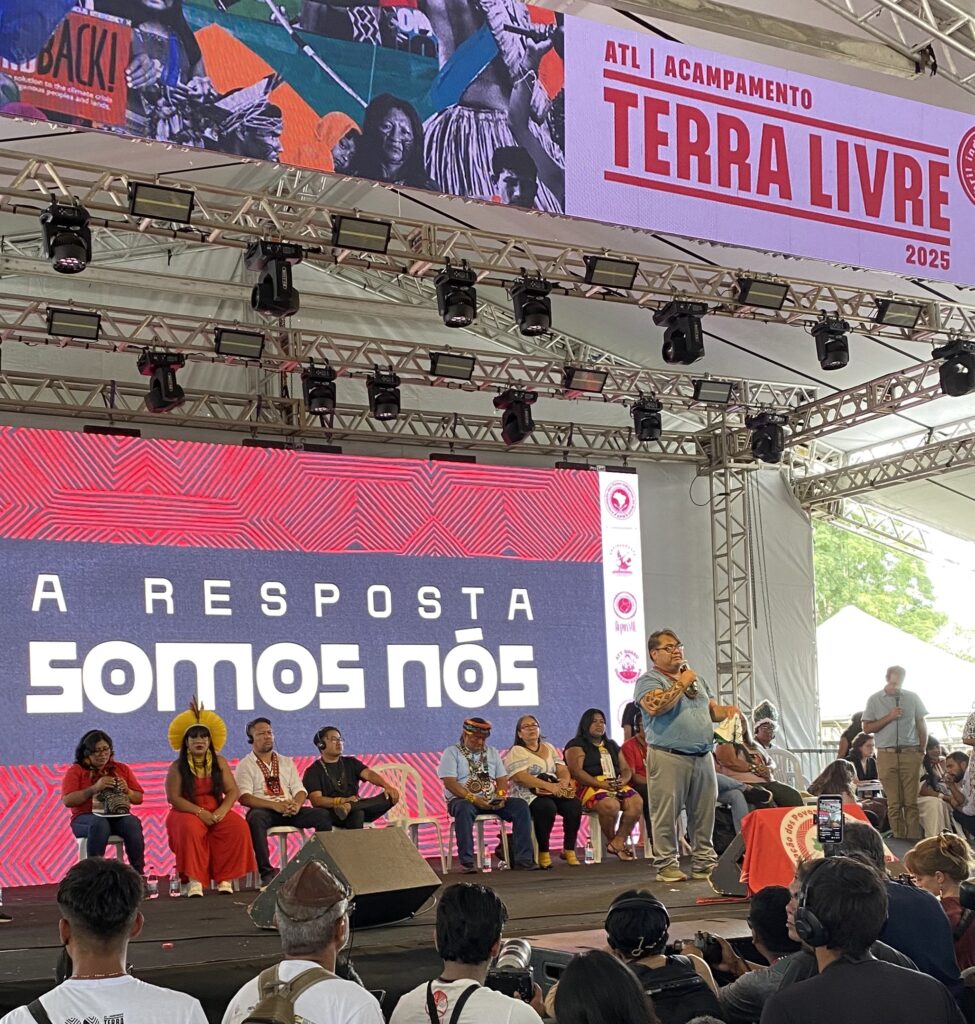
Toya Manchineri speaks at the plenary during the ATL (credit: Daniela Lima).
The campaign was later adopted by the national movement, as Indigenous peoples from regions outside the Amazon rainforest, despite being rendered invisible by mainstream studies about forest protection and climate crises, increasingly recognize themselves as affected by the climate emergency and guardians of the forest. Recent data from Brazil reveals that, over the past 30 years, Indigenous territories all over the country have lost only 1% of their native vegetation, while surrounding private lands have lost approximately 20%.
However, the movements are pushing further, arguing that these studies remain insufficient, as they fail to engage with Indigenous knowledges and overlook the threats and violence faced by those who place their bodies on the frontlines to defend their territories. Satellite studies cannot capture the pain, suffering, and the constant reports of an unjust and disproportionate war. This war is not only against Indigenous peoples but also against nature itself, affecting countless human and non-human bodies that modernity deems expendable.
The Indigenous movements remind us of the immense cost of defending life on the land — with Indigenous blood spilled and brutal persecution endured. They emphasize that the future of the planet hinges on our collective ability to protect Indigenous territories and local communities from these relentless attacks driven by economic interests. At the same time, solutions must be grounded in the realities of those who safeguard the planet’s balance every day, those who create “the reserve of life for the planet”, as APIB has put it.
Indigenous voices and the solutions
In addition to recognizing Indigenous territories as fundamental to halting climate collapse, we must also recognize Indigenous science and their millennia-old knowledge systems. Indigenous peoples affirm that they know how to care for and cool the planet because their ancestors taught them. Thus, recognition and protection of Indigenous lands and their inhabitants is, as Indigenous participants at the ATL remind us, the most effective form of climate action. The central demand from Indigenous movements, therefore, is that Brazil formally recognize, in its Nationally Determined Contributions (NDCs) to be presented at COP30, the protection of Indigenous lands as a climate policy.
Since 1988, following Brazil’s re-democratization after more than twenty years under a military-business dictatorship, the country’s Constitution has guaranteed Indigenous peoples the right to the territories they have traditionally occupied, granting them exclusive usufruct of these lands, which are to be recognized, protected, and officially registered. However, this right has been historically violated, and in recent years, attacks on Indigenous territories have escalated—largely driven by the economic interests of agribusiness and mining sectors, which have aligned with political elites to undermine Indigenous rights.
Thus, the Conference of the Parties (COP), organized by the United Nations to address climate change, becomes an important occasion for Indigenous peoples to denounce violations of their rights and to assert their self-determination through participation in decisions that affect their territories. Their commitment to protecting their territories in the face of fossil fuel exploitation, mining, and the accelerating climate collapse has led Indigenous organizations, including APIB, to maintain a strong and growing presence in the COPs.
Climate conferences’ possibilities and contradictions
Indigenous peoples and organizations have been participating in the COPs since 1998, but it was only at COP 11, in 2005, that there was a direct reference to Indigenous peoples for the first time, when it was acknowledged that their knowledge could contribute to documenting the effects of climate change. Since 2016, there has been a significant increase in references to Indigenous peoples within the realm of global climate governance. This is due to the worsening impacts of climate change on these communities and the gradual recognition of the value of Indigenous traditional knowledge in this field, as well as the growing presence and influence of Indigenous groups at the COPs.
During the ATL, Sonia Guajajara, Brazil’s minister for Indigenous peoples, gave a brief history of this participation and recalled that at COP 15, in 2009, there were only 5 indigenous from Brazil, while at COP 28, which took place in Dubai in 2023, 100 indigenous leaders took part. The expectation is that COP 30 in the Amazon city of Belém will see the largest Indigenous participation in the history of COPs, and that they will be at the center of the discussions. This expectation grew stronger when the president of COP 30, Ambassador André Corrêa do Lago, attended the ATL to announce the creation of four thematic circles designed to accelerate climate action – one of which includes both global and Brazilian Indigenous leaders. Sonia Guajajara also explained the creation of a circle coordinated by her that, together with the COP presidency, will organize proposals in response to the climate emergency. As she put it:
“It is a commission that will be part of a circle established by this presidency, and within this circle will be the highest representative bodies of Indigenous peoples. This commission will include representatives from the UN Permanent Forum (on Indigenous issues), the Indigenous Caucus, the Local Communities and Indigenous Peoples Platform, the Global Alliance, the Amazon Basin representation, and the Brazilian Indigenous Movement through APIB, AMIGA (National Articulation of Indigenous Women Warriors of Ancestry), and COIAB. So this is a space where we will bring the strength of Indigenous peoples, not only from Brazil but from around the world. And our main message at this COP is to highlight the role of Indigenous territories as the cornerstone in the fight against the climate crisis.”
During the ATL, I observed calls for “better participation within the COP,” “participation at the main discussion tables,” and “decision-making power.” In my assessment, considering the current political situation in Brazil and the strong pressure from economic sectors opposed to Indigenous territorial rights, there will be a significant Indigenous presence at this COP, but hardly with the power to influence the decisions of the Brazilian government or the negotiations in general.
Furthermore, during the activities, plenaries, and debates I attended, I observed no explicit criticism of the climate conferences, despite the growing skepticism about the potential for meaningful change within this system, which has already been co-opted by oil companies and large extractive corporations. Thus, it seems that alongside the hope for increased Indigenous protagonism, there could also be a critical analysis of what has been taking place within the COPs—an analysis that could point to new paths and alternatives envisioned from the perspective of Indigenous movements in Brazil.
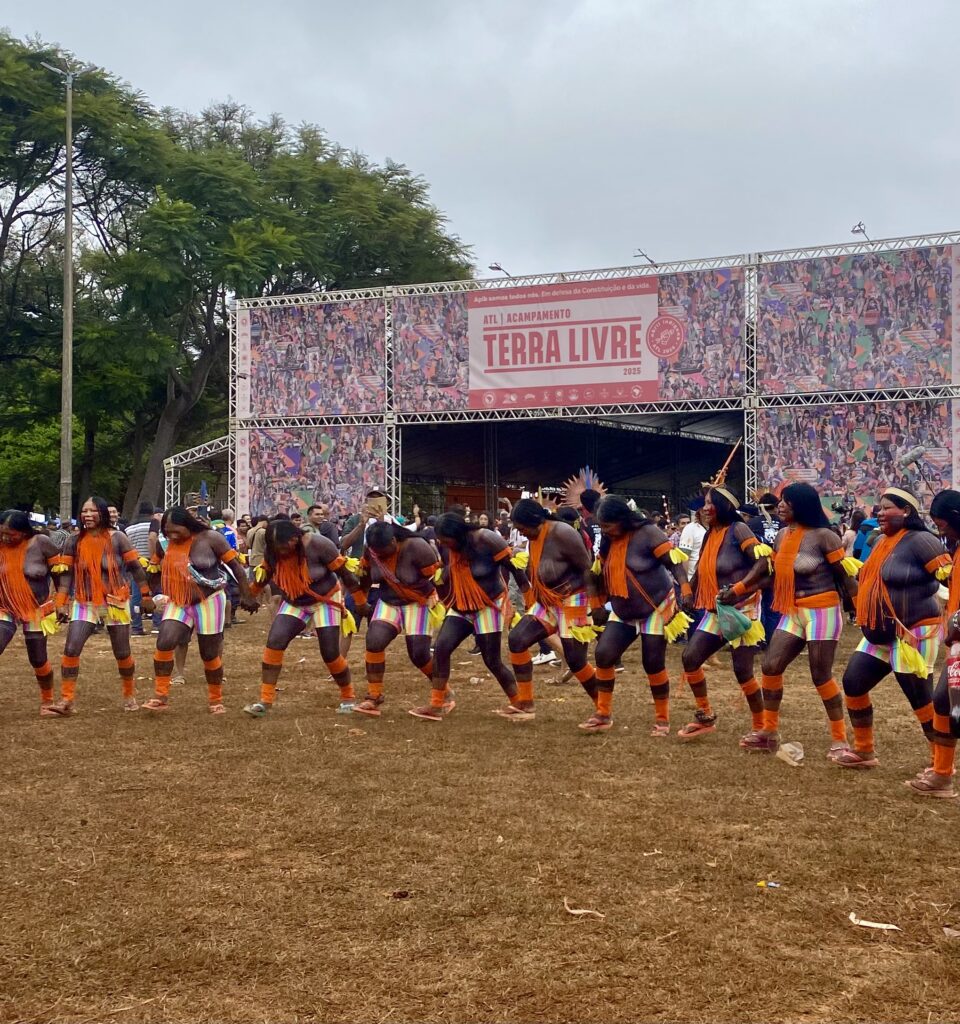
Xikrin women perform a ritual in front of the ATL plenary (credit: Daniela Lima).
Alternative visions of just transitions and ways of life
Throughout the ATL’s days of activities, a just energy transition was also a central topic of debate, with the active participation of Indigenous communities affected by the exploitation of gas, oil, and even renewable energies, such as wind power, which is rapidly expanding in the country. Indigenous leaders expressed concern over Brazil’s ambition to become one of the world’s largest oil exporters in the coming years including oil drilling in the mouth of the Amazon. They are acutely aware of the socio-environmental impacts of these projects — including pollution, rising violence, and the death of animals. They also denounce the systematic violation of their right to free, prior, and informed consultation, as established by Convention 169 of the International Labour Organization.
I spoke with Chief Jonas Mura, from the state of Amazonas, about what a just transition means from the perspective of Indigenous peoples in Brazil. For him, a just transition must include free, prior, and informed consultation with Indigenous communities before the implementation of renewable energy projects, and it must not harm the biodiversity of their territories. The Indigenous leaders understand the urgent need for an energy transition but demand that it be carried out in dialogue and with respect for their territories, and all the lives that inhabit this space, which for them is sacred.
Thus, the climate debate held during the ATL indicates that Indigenous peoples in Brazil are thinking of socio-onto-ecological transformations rather than merely energy transitions. For them, the transition can become a trap if it is not conceived from the perspective of a decolonial ecology, one that fights against social injustices and acknowledges the epistemological and ontological diversity of the world as a necessary path to confront the climate collapse produced by modern capitalism.
Ultimately, the ATL sends a powerful message: the struggle of Indigenous peoples must be embraced by all those who seek to resist barbarism. The motto “The answer is us” signals a necessary alliance between Indigenous peoples, scientists, governments, and society at large. As Indigenous voices in Brazil remind us, “there will be no life on a burning planet”. It is becoming increasingly clear that there is no viable future without recognizing Indigenous science and ways of life – rooted in ancestry, reciprocity, and deep respect for the Earth. The challenge now is not only to listen attentively to Indigenous voices, but to ensure they are at the very heart of climate decision-making.


